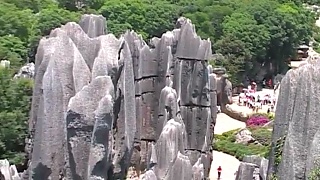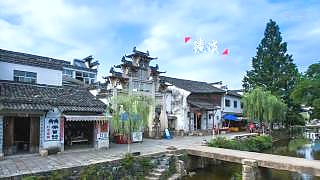 More dance 舞蹈 fun in China …
More dance 舞蹈 fun in China …
Chilling out in China, 2012 ...
[640],shadow=true,start=,stop=
Related Videos
Featured Videos

|
Bonus film - big city Hong Kong trip ...
|

|
In HeiLongJiang province.
Runs to the end of February, approximately.
|

|
With Beijing Old Liu ...
Welcome to the Temple of Heaven
Explore the ancient beauty and cultural significance of the Temple of Heaven in Beijing.
Introduction
The Temple of Heaven is a complex of religious buildings situated in the southeastern part of central Beijing. It is renowned for its architectural beauty and historical significance.
Location
The Temple of Heaven is located in the Dongcheng District of Beijing, easily accessible from various parts of the city.
History
The Temple of Heaven was constructed from 1406 to 1420 during the reign of the Yongle Emperor, who also oversaw the construction of the Forbidden City. The temple complex was used by the emperors of the Ming and Qing dynasties for annual ceremonies of prayer to Heaven for a good harvest.
The temple complex was expanded and renovated during the reign of the Jiajing Emperor in the 16th century and again during the reign of the Qianlong Emperor in the 18th century. It was designated a UNESCO World Heritage Site in 1998.
Attractions
Hall of Prayer for Good Harvests: The iconic triple-gabled circular building, used by emperors to pray for good harvests.
Imperial Vault of Heaven: A circular building surrounded by a smooth circular wall, famous for its Echo Wall.
Circular Mound Altar: An open-air altar platform where the emperor would worship Heaven during the winter solstice.
Seven Star Stones: A group of large stones with historical and cultural significance.
Ancient Cypress Trees: The garden areas of the complex are home to many ancient cypress trees, some over 600 years old.
Activities
Historical Tours
Cultural Performances
Photography
Guided Walks
Seasonal Festivals and Events
Facilities
Visitor Center
Restrooms
Gift Shops
Cafes and Restaurants
Parking Lots
Wheelchair Access
Visitor Tips
Wear comfortable walking shoes.
Bring water and snacks, especially if you plan to stay for several hours.
Visit early in the morning or late in the afternoon to avoid crowds.
Check the weather forecast and dress appropriately.
Respect the cultural significance of the site; behave appropriately and follow all rules and guidelines.
|

|
Overview :
Walk-through :
Music and dance :
Fly-over and night-time :
The Stone Forest is not far from the city of Kunming.
|

|
With YChina! ...
|

|
Tiger Leaping Gorge (虎跳峡 / HǔTiào Xiá) is a beautiful canyon on the JinSha River, a primary tributary of the upper YangTse River. It lies about 60 kilometers (38 miles) north of LiJiang in YunNan province, south west China and is part of the 'Three Parallel Rivers of Yunnan' UNESCO World Heritage Site.
Tiger Leaping Gorge is around 15 kilometers (9 miles) in length and passes between Jade Dragon Snow Mountain and Haba Snow Mountain in a series of rapids below towering 2,000 meter (6,600 feet) cliffs.
This film shows part of the lower trail and the spot where legend says a tiger jumped the rapids at their narrowest point (some 20 plus meters).
|

|
LiaoNing province.
With Nadine in China ...
With Gecko Walks ...
|

|
Humans are not designed to eat sugar and refined carbohydrates (more sugar); the illnesses these cause (via insulin resistance) are many and the understanding of the link still not well known.
With Dr. Eric Berg and Ghaida ...
|
Tag search ?
 More dance 舞蹈 fun in China …
More dance 舞蹈 fun in China …




